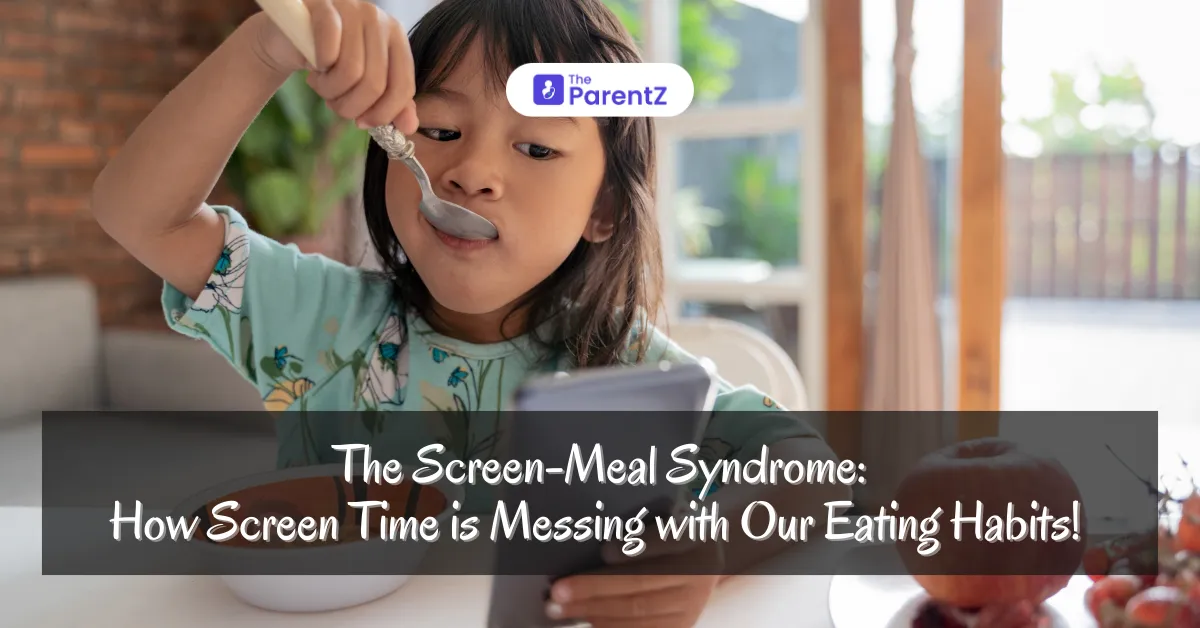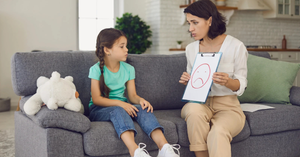Let's be honest: how many times have you sat down to a meal only to realize you've spent more time scrolling through your phone than actually enjoying your food? Or maybe you've noticed your kids glued to the TV while they mindlessly munch on snacks? In today's digital world, the connection between screen time and eating is undeniable, and it's not a healthy one. This isn't about judgment; it's about understanding a common problem and finding ways to navigate it.
From toddlers mesmerized by 'Cocomelon' on tablets to teenagers scrolling through TikTok or Instagram Reels during dinner, screens have become a constant companion at mealtimes. We’ve all been there – trying to get a fussy toddler to eat “just one more bite” by putting on their favorite show. It seems like a quick fix, a temporary solution to a frustrating problem. But what we don’t always realize is that we’re setting a precedent, creating a habit that can be difficult to break.
The Connection Between Screen Time and Eating
The connection is simple: we’re eating more often while engaging with screens. This isn’t just about sitting in front of the TV; it includes using phones, tablets, and computers during meals or while snacking. This constant pairing of screens and food has become normalized, especially with the rise of streaming services, social media, and on-demand entertainment. It’s become so ingrained that many people, especially younger generations, find it difficult to eat without some form of screen-based distraction.
It starts innocently enough. A quick YouTube video while the toddler eats. A Netflix show during family dinner. Instagram scrolling while munching on snacks. Before we know it, screens have completely transformed our eating experience.
Why Screens and Meals Don't Mix?
Why are we saying that this connection between screen time and eating is so problematic? There are several reasons:
- Mindless Eating: When we're engrossed in a screen, we're not paying attention to our bodies' hunger and fullness cues. We can easily overeat without even realizing it because our brains are focused on the content, not the food. Think about it: have you ever finished a whole bag of candy while watching a movie and wondered where it all went? That's mindless eating in action. We lose track of how much we’ve consumed because our attention is divided. And let’s be real, how many times have you watched your teen, eyes glued to a reel, putting an empty fork in their mouth, completely oblivious that their plate is clean? It's a common scenario, and it highlights just how distracting screens can be.
- Distraction from Social Interaction: Mealtimes are traditionally a time for families to connect, share their day, and bond. But when everyone's staring at their own screens, these valuable opportunities for communication are lost. Instead of engaging in conversation, we're isolated in our own digital worlds, even when we're sitting at the same table.
- Unhealthy Food Choices: Often, the content we consume on screens, especially advertisements and online videos, promotes unhealthy food choices like sugary drinks, processed snacks, and fast food. This constant exposure can influence our cravings and make us more likely to choose these unhealthy options. Plus, when we’re eating in front of the screen, we tend to grab whatever is easiest and quickest, which often means processed and packaged foods. Convenience often trumps nutrition when screens are involved.
- Disrupted Eating Patterns: Screen time before bed can interfere with sleep, and poor sleep can, in turn, affect our appetite and eating patterns. We may find ourselves craving more sugary and high-fat foods when we're tired, leading to unhealthy snacking and weight gain. The blue light also disrupts our natural sleep-wake cycle, further exacerbating the problem. And be honest, how many times a week do you wake up to the clanging of utensils in the kitchen as your teens whip up a midnight batch of instant noodles after scrolling through food videos?
The Role of Parents
Sometimes, as parents, we inadvertently encourage this. We’re tired, we’re busy, and sometimes, the easiest way to get a moment of peace is to hand our child a device. We might even justify it by saying, "At least they're eating something." However, this short-term solution can lead to long-term issues, creating dependency on screens during mealtimes. And how many times have your teens come bounding into your room after watching those viral food reels where people are taking massive bites of elaborate dishes, begging to order takeout from Zomato or Blinkit, even though they just had dinner? These scenarios are all too familiar in today's screen-saturated world.
It's important to acknowledge that not all screen time is created equal. There's a place for positive screen time, such as educational programs, creative apps, and connecting with loved ones virtually. However, when it comes to eating, minimizing distractions is key.
Breaking the Habit
So, how do we handle this? How do we break the link between screen time and eating? It’s not about demonizing screens altogether; they’re a part of our lives now. It’s about creating healthy boundaries.
- Establish Screen-Free Zones and Times: Designate specific areas in your home, like the dining table, as screen-free zones. Implement screen-free mealtimes for the whole family. This means no phones, tablets, or TVs during breakfast, lunch, and dinner.
- Model Healthy Habits: Children learn by observing their parents. If you're constantly checking your phone at the table, your kids will think it's acceptable behavior. Put your own devices away during mealtimes to set a good example.
- Engage in Conversation: Use mealtimes as an opportunity to connect with your family. Ask about their day, share stories, and create a positive and engaging atmosphere. This will make mealtimes more enjoyable and less reliant on screens for entertainment.
- Plan Ahead: Prepare meals in advance and have healthy snacks readily available to avoid resorting to quick and unhealthy options when hunger strikes.
- Be Consistent: Breaking the habit of screen time and eating takes time and consistency. Don't give up if you face resistance at first. Stick to the new rules, and eventually, everyone will adjust.
Conclusion
Breaking the connection between screen time and eating isn’t easy, but it’s crucial for our physical and mental well-being. By making conscious choices and setting healthy boundaries, we can reclaim our mealtimes and create a healthier relationship with food and with each other. It's about finding a balance in our increasingly digital world, a balance that prioritizes our health and our connections.








Be the first one to comment on this story.